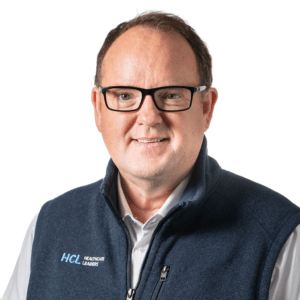Admissions, discharges and data-sharing
Data sharing can improve clinical care and reduce errors during patient transfers, but who decides what pieces of information are shared? Is too much admission/discharge information worse than no information at all?
A panel of long-term care thought leaders discussed the limits of the current regulations and the challenges of identifying mission-critical data elements for admissions and discharges in a collaborative session at the National Association for the Support of Long Term Care (NASL) annual meeting this week in Nashville, Tennessee.
As advancements are made in information technology, healthcare partners have the ability to exchange buckets of information, yet nursing home staff are often still lacking some of the information needed to provide the best care, have the right supplies ready at admission and/or communicate with the key providers in the care chain. “Gathering and storing the data isn’t that hard to do,” said Robert Latz, PT, DPT, CHCIO, chief information officer for Trinity Rehabilitation Services, one of the panelists. “The hard part is identifying which data points are most valuable to share.”
Early efforts to determine the key data elements for care transitions resulted in hundreds of worthy pieces of information, yet most organizations can’t share more than a dozen or so, noted panelist Terrence O’Malley, MD, medical director for non-acute care services for Partners HealthCare. Unfortunately, one of the most important items is the discharge diagnosis, which often isn’t available for days or even weeks.
Another challenge has been the cookie-cutter approach to how and when hospitals discharge patients to skilled nursing care—including measures that are tied to length of stay, said Dheeraj Mahajan, MD, CMD, CIC, president and CEO of Chicago Internal Medicine practice and research. “Length of stay is not an indicator of success where I practice,” he said. “If I let them out in fewer days, they will be back.”
There’s still a big disconnect between the data-sharing capabilities of hospitals and those of long-term care, said Mary Van de Kamp, MS/CCC-CSLP, senior vice president for quality at Kindred Rehabilitation Services. At first, she said, “We weren’t talking about exchanging data with outside partners. We couldn’t even talk to each other.” Once Kindred had data-sharing capabilities, it was like drinking from a firehose: “It was a giant data dump. Everything came down, whether it was information we wanted or not.”
Organizations would be wise to examine what data elements are needed by their trading partners and build data exchange capabilities based on them, the panel suggested. It’s not just about what data can be transferred, but also how far in advance data can be shared so everyone is prepared—especially skilled nursing facilities that may not have special equipment or may need to prepare in advance for after-hours supplies.
The current measures for transitions of care are a step in the right direction, but the system needs some revisions, the panelists agreed. “You don’t need a 70-page data dump,” O’Malley said. “You need just enough to do the job. We are the ones who have to determine what ‘enough’ is.”
“In phase 2, the newly finalized requirements of participation for LTC facilities will require certain pieces of data describing the resident must be transferred around the same time as the actual transfer,” said Cynthia Morton, executive vice President of NASL. “But we don’t know yet if the data CMS is requiring is the right data.”
The distractions and inefficiencies of information overload can cause nursing staffs to take their eyes off the goal, especially in terms of why the documentation is important, noted Judi Kulus, MSN, MAT, RN, NHA, DNS-CT, RAC-MT, vice president of curriculum development for the American Association of Nurse Assessment Coordinators. “For example, the [MDS] Section GG measures that are out now will lead to quality measures,” she predicts. “Keep hounding your staff on accuracy and quality, not just on checking the box, or you’ll be short-sighted. The quality measures are coming.”

Pamela Tabar was editor-in-chief of I Advance Senior Care from 2013-2018. She has worked as a writer and editor for healthcare business media since 1998, including as News Editor of Healthcare Informatics. She has a master’s degree in journalism from Kent State University and a master’s degree in English from the University of York, England.
Related Articles
Topics: Administration , Articles , Clinical , Medicare/Medicaid , Regulatory Compliance , Rehabilitation , Technology & IT










